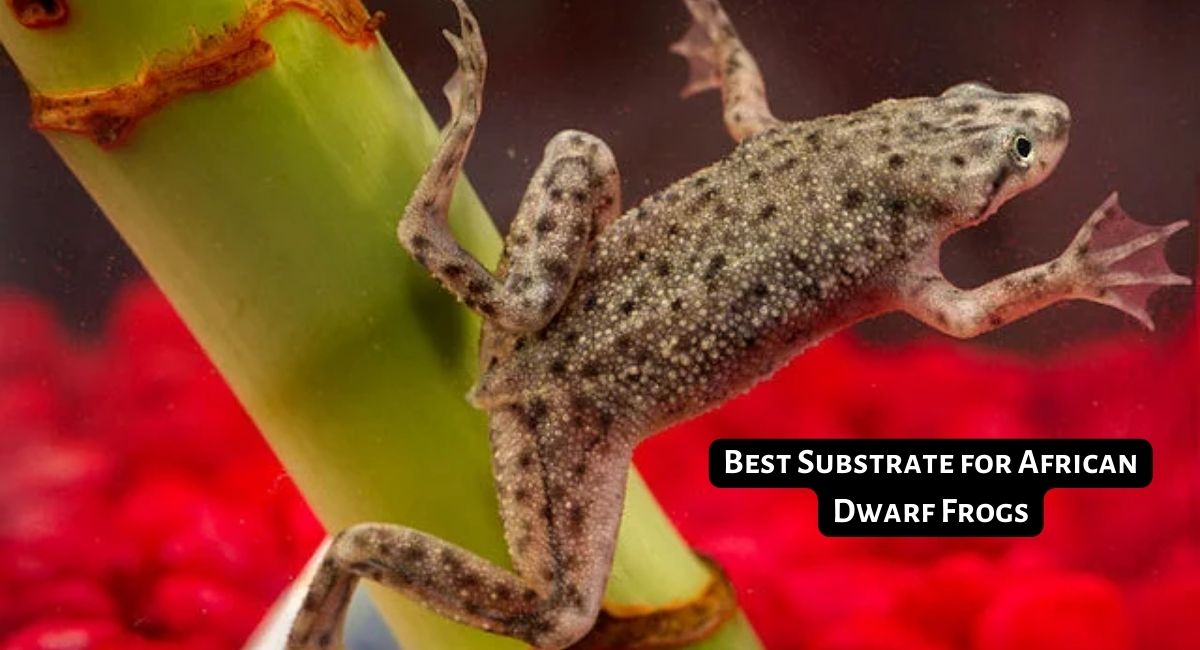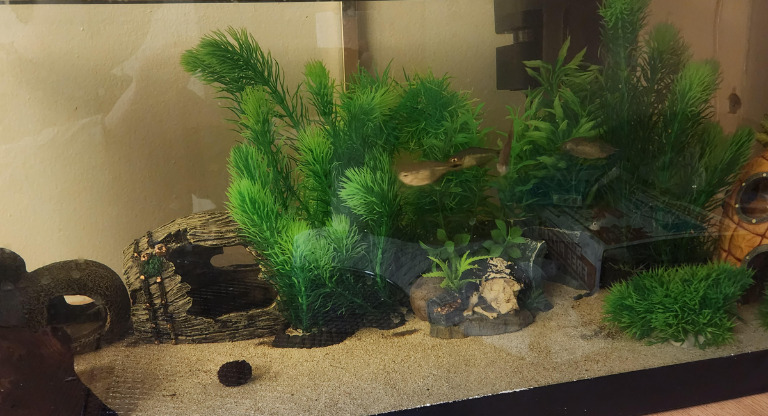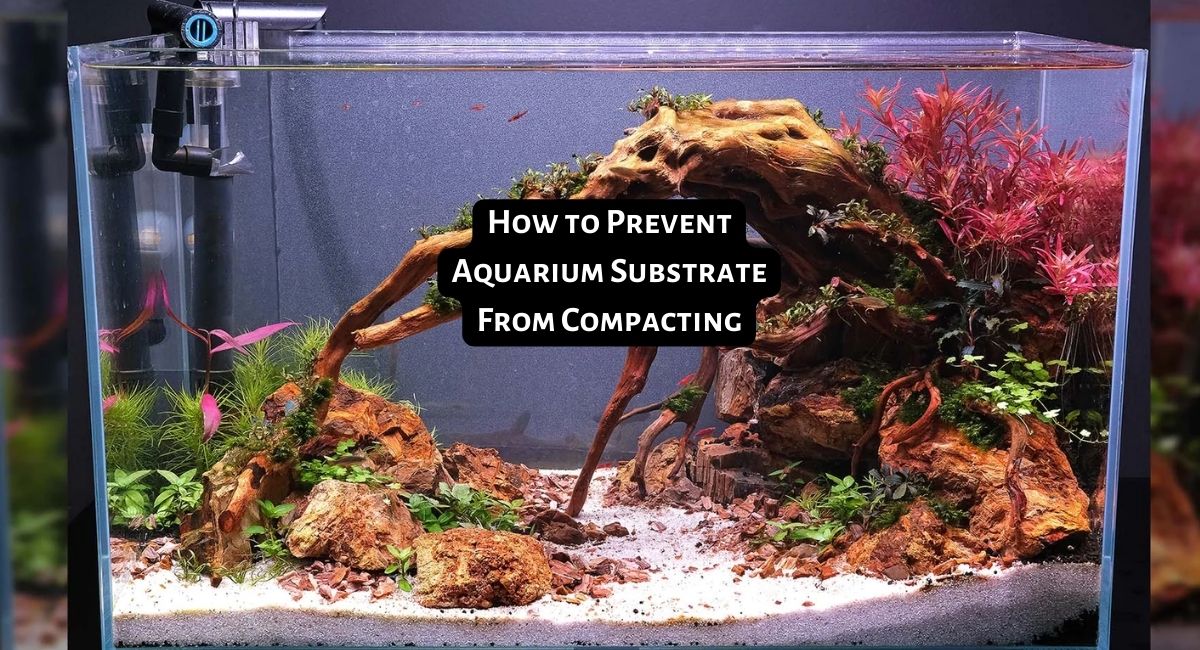Smartplantedaquarium.com participates in affiliate marketing programs. We may earn commissions on purchases made through our affiliate links. This doesn't affect our content or recommendations and we only recommend products we would put in our own tanks.
Finding the best substrate for African Dwarf Frogs goes beyond visual purposes. The best substrate for African Dwarf Frogs is one which can maintain their well-being while replicating their natural environment.
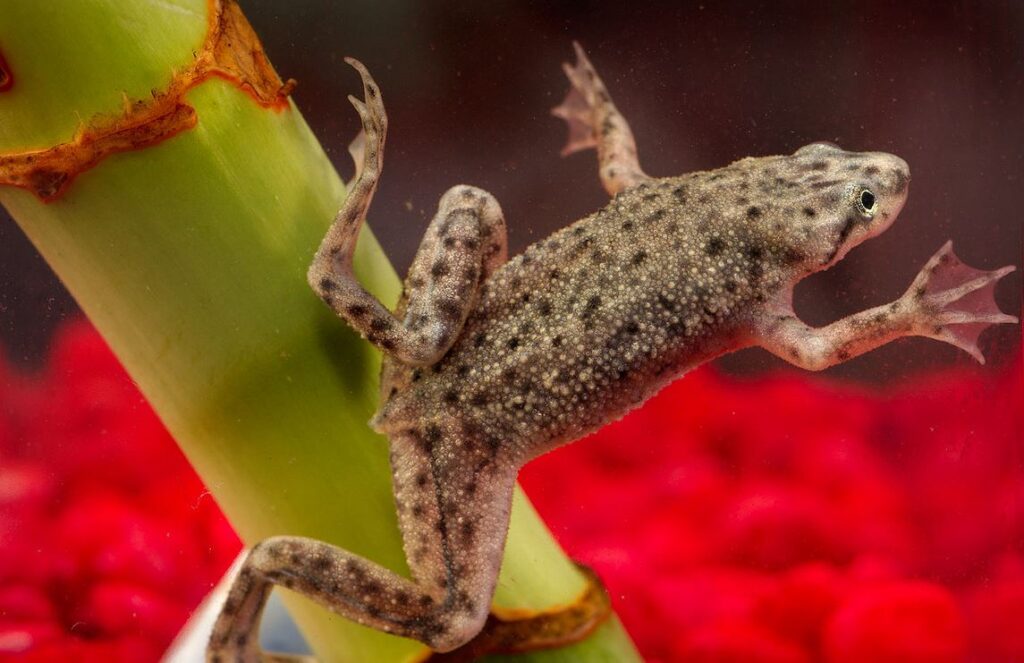
African Dwarf Frogs (Hymenochirus spp.) have gained immense popularity among aquatic enthusiasts due to their charming appearance and manageable care requirements. These tiny amphibians are known for their peaceful nature and unique behaviors, making them a delightful addition to both beginner and experienced aquarium keepers.
In this guide, we’ll delve into the world of substrates, exploring the various options available, the factors to consider when making your selection, and how to strike the perfect balance between functionality and aesthetics.
Whether you’re a newcomer to the world of aquatic frog keeping or a seasoned pro, this article will provide you with valuable insights to create an optimal substrate environment for your African Dwarf Frogs.
Contents
Key Takeaways
- African Dwarf Frogs benefit from having substrate in their aquarium for both functional and aesthetic purposes.
- Substrate helps replicate their natural environment, allows them to engage in natural behaviors like burrowing and digging, aids in capturing and consuming food, supports beneficial bacteria growth, and enhances the visual appeal of the aquarium.
- The best substrate options for African Dwarf Frogs are sand and gravel.
- Sand closely mimics the frogs’ natural habitat, allows for burrowing, is gentle on their skin, and provides natural foraging opportunities.
- Gravel comes in various colors and sizes, is stable and easy to clean, supports plant growth, and provides a solid foundation for aquarium decor.
- When choosing sand substrate, consider the particle size, depth, cleaning requirements, water movement, planting options, substrate stirring, and cycling period.
- Recommended sand substrates for African Dwarf Frogs include CaribSea Super Naturals Aquarium Sand, Seachem Flourite Black Sand, Spectrastone Shallow Creek Regular Aquarium Gravel, Estes Marine Sand, and Nature’s Ocean No.0 Bio-Activ Live Aragonite Live Sand.
- When choosing gravel substrate, consider the grain size, depth, smooth edges, cleaning requirements, feeding and foraging opportunities, compatibility with plants, decor and arrangement options, aquarium size, and cycling period.
- Recommended gravel substrates for African Dwarf Frogs include CaribSea Eco-Complete Planted Aquarium Substrate, Fluval Plant and Shrimp Stratum, Seachem Fluorite Black Gravel, and Estes Marine Sand and Gravel.
Do African Dwarf Frogs Require Substrate
Yes, African Dwarf Frogs do benefit from having a substrate in their aquarium. Substrate serves both functional and aesthetic purposes in their habitat, helping to create a more natural and comfortable environment for these aquatic amphibians. Here’s why substrate is important for African Dwarf Frogs:
- Natural Environment: In the wild, African Dwarf Frogs inhabit slow-moving waters with sandy or muddy bottoms. Providing a similar substrate in their aquarium helps replicate their natural habitat, making them feel more at ease and reducing stress.
- Comfort and Exploration: Substrate allows African Dwarf Frogs to engage in natural behaviors like burrowing and digging. They might bury themselves partially or fully in the substrate, which provides them with a sense of security and allows them to explore their environment.
- Feeding Behavior: African Dwarf Frogs are opportunistic feeders, and a substrate with a texture similar to their natural habitat can aid in capturing and consuming their food. Some sinking pellets or live foods may fall into the substrate, allowing the frogs to forage and hunt.
- Bacterial Colony: A beneficial bacterial colony often develops in the substrate, contributing to the overall health of the aquarium ecosystem. These bacteria help break down waste and contribute to maintaining water quality.
- Aesthetics: A well-chosen substrate enhances the visual appeal of the aquarium. It can create a more natural and attractive backdrop for the frogs and any other inhabitants of the tank.
Best Substrate for African Dwarf Frogs
The best substrate for African dwarf frogs is an inert substrate like sand or gravel. These substrates provide a neutral base, allowing the frogs to exhibit natural behaviors without altering water parameters. Remember to choose the substrate size and type that best suits your tank setup and the needs of your African dwarf frogs.
Sand
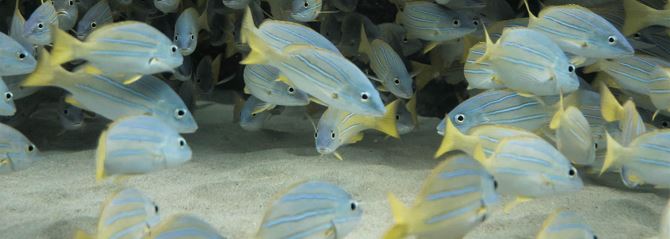
| Pros | Cons |
|---|---|
| Natural looking | Can be accidentally ingested leading to impaction |
| Inexpensive and easy to find | Difficult to keep clean, debris visible on top |
| Allows frogs to burrow | Sand particles may irritate frog’s sensitive skin |
| Provides places for beneficial bacteria | Requires more frequent water changes and cleaning |
| Can come in different colors and grain sizes | May encourage growth of unwanted algae |
| Heavier than gravel, less likely to be moved | Can compact over time, needs to be stirred |
| Softer on fragile frog feet than gravel | Harder to vacuum and clean waste from |
Using sand as a substrate for your African Dwarf Frogs’ aquarium can be a great choice, as it closely replicates their natural habitat and provides a comfortable environment for them. However, there are certain considerations and guidelines you should keep in mind when using sand as a substrate:
Benefits of Sand Substrate:
- Natural Appearance: Sand closely mimics the sandy or muddy bottoms of African Dwarf Frogs’ native habitats, creating a more natural and visually appealing environment.
- Burrowing Behavior: African Dwarf Frogs are known for their burrowing behavior. Sand allows them to engage in this natural behavior, which can reduce stress and make them feel more at home.
- Comfortable Surface: The fine texture of sand is gentle on the frogs’ delicate skin, reducing the risk of abrasions or injuries.
- Foraging: Sand substrate allows the frogs to forage for food more naturally, as sinking pellets or live foods can settle into the substrate, simulating their feeding habits in the wild.
Considerations When Using Sand Substrate:
- Particle Size: Choose a fine-grain sand with particles that are small enough for the frogs to move through comfortably. Avoid very coarse sand, as it could be uncomfortable for the frogs and potentially harm their skin.
- Depth: Keep the sand depth at around 1 to 2 inches. This depth allows for burrowing without causing the frogs to become completely hidden in the substrate.
- Cleaning: Sand can trap debris and waste, making it important to maintain good water quality. Gently vacuum the sand during water changes to remove excess waste and detritus.
- Water Movement: Consider the water flow in your aquarium. Sand can be easily disturbed by strong water currents, so ensure that the flow is appropriate for the sand to settle properly.
- Planting: If you plan to have live aquatic plants, you might need to consider using plant-friendly substrates or adding root tabs to provide essential nutrients for the plants.
- Substrate Stirring: Be cautious when adding or moving items in the tank, as this can disturb the sand and affect water clarity. Using a turkey baster or a gentle touch when handling objects in the tank can help prevent this.
- Cycling Period: When initially setting up the tank, allow time for the sand to settle and any residual dust to clear before introducing the frogs. This can help prevent cloudiness in the water.
Best Sand Substrate for African Dwarf Frogs:
When selecting the best sand substrate for your African Dwarf Frogs’ aquarium, it’s important to choose a product that aligns with their natural habitat, is safe for their sensitive skin, and provides a comfortable environment for them. Here are some highly regarded sand substrate options that are commonly recommended for African Dwarf Frogs:
- CaribSea Super Naturals Aquarium Sand: This substrate is known for its fine grain and natural appearance, resembling the sandy bottoms of aquatic environments. It comes in various colors, allowing you to choose a shade that complements your aquarium’s design. CaribSea Super Naturals is specifically designed for aquarium use and is safe for both frogs and plants.
- Seachem Flourite Black Sand: While not a traditional sand substrate, Seachem Flourite Black Sand is a porous clay-based substrate that supports plant growth and provides a natural appearance. It offers the benefits of sand while also promoting the health of live aquatic plants, creating a well-rounded habitat for your frogs.
- Spectrastone Shallow Creek Regular Aquarium Gravel: While labeled as “gravel,” this product has a fine texture similar to sand. It’s smooth and gentle on the frogs’ skin, making it a suitable choice for African Dwarf Frogs. The natural colors and texture make it a visually appealing option for their aquarium.
- Estes Marine Sand (Stoney River Premium Aquarium Sand): Estes Marine Sand is another popular choice due to its fine grain and natural appearance. It’s designed to be safe for aquarium use and provides a comfortable substrate for frogs to explore and burrow.
- Nature’s Ocean No.0 Bio-Activ Live Aragonite Live Sand: This live sand option is suitable for both marine and freshwater aquariums. It contains beneficial bacteria that can help establish a healthy biological filter in the tank. While not a traditional choice, some frog keepers have successfully used aragonite sand for their African Dwarf Frogs.
Gravel
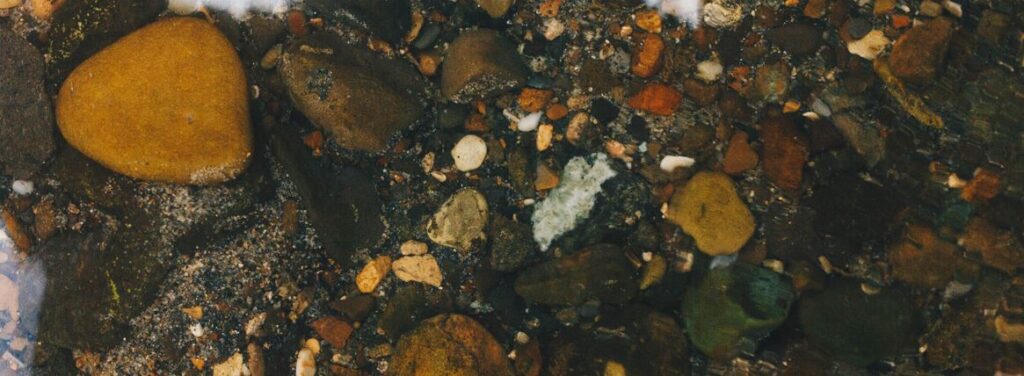
| Pros | Cons |
|---|---|
| Easy to keep clean | Less natural looking than sand or soil |
| Waste and debris sit on top, easy to remove | Provides no burial or burrowing opportunities |
| Fewer impaction risks if accidentally ingested | Can be rough on delicate frog skin and feet |
| Requires less frequent water changes | Limited space for beneficial bacterial colonies |
| Widely available and inexpensive | Necessary to rinse well before use |
| Heavier materials less likely to be moved | Limited color and size options |
| Less likely to compact over time | May allow build up of unseen waste |
| Less prone to developing algae | Hard particles if frog falls or jumps |
Using gravel as a substrate for your African Dwarf Frogs’ aquarium is another option that can work well, provided you consider certain factors and follow specific guidelines to ensure the frogs’ comfort and well-being:
Benefits of Gravel Substrate:
- Variety of Options: Gravel comes in various colors and sizes, allowing you to customize the appearance of the aquarium to your liking.
- Stability: Gravel is relatively stable and less likely to be disturbed by water currents compared to finer substrates like sand.
- Ease of Cleaning: Waste and debris tend to sit on top of gravel, making it easier to clean during water changes by using a siphon or gravel vacuum.
- Plant Growth: Some aquarium plants can root more securely in gravel, making it a good choice if you plan to incorporate live plants into the setup.
Considerations When Using Gravel Substrate:
- Grain Size: Choose gravel with a moderate grain size that is neither too large nor too small. Too large of gravel can be uncomfortable for the frogs to move over, while very fine gravel can make it difficult for them to burrow.
- Depth: Maintain a gravel depth of around 1 to 2 inches. This depth provides enough room for the frogs to move and explore without becoming buried.
- Smooth Edges: Ensure that the gravel pieces have smooth edges to prevent any harm to the frogs’ delicate skin.
- Cleaning: As mentioned earlier, gravel is relatively easy to clean with a siphon or gravel vacuum. Regular maintenance will help prevent waste buildup and maintain water quality.
- Feeding and Foraging: Gravel allows for easy foraging and food retrieval. Make sure to place sinking pellets or live foods in areas where the frogs can locate them.
- Compatibility with Plants: If you plan to keep live plants, choose gravel that will support their growth. Some plants root more effectively in gravel and can benefit from the added stability it provides.
- Decor and Arrangement: Gravel provides a solid foundation for aquarium decor, such as rocks, driftwood, and plants. Be mindful of arranging these elements to create hiding spots and climbing areas for the frogs.
- Aquarium Size: The size of your aquarium can influence the type of gravel you choose. In larger tanks, heavier gravel can help anchor decor and resist displacement due to water movement.
- Cycling Period: Allow the tank to cycle properly before introducing African Dwarf Frogs. This allows any initial cloudiness from adding the gravel to settle.
Best Gravel Substrate for African Dwarf Frogs:
When choosing the best gravel substrate for your African Dwarf Frogs’ aquarium, it’s important to consider the frogs’ comfort, safety, and the aesthetics of the environment. Here are some recommended gravel substrate options that are suitable for African Dwarf Frogs:
- CaribSea Eco-Complete Planted Aquarium Substrate: Although labeled as “substrate,” this product is a fine-grain gravel that works well for planted tanks and provides a comfortable environment for frogs. It contains beneficial bacteria and essential nutrients to support plant growth.
- Fluval Plant and Shrimp Stratum: This lightweight planted aquarium substrate is designed to promote healthy plant growth. It’s fine texture and dark color can complement the frogs’ appearance and natural habitat.
- Seachem Fluorite Black Gravel: Similar to Seachem’s black sand option, Fluorite Black Gravel is a porous clay-based substrate that supports plant growth while also providing a textured and natural look to the tank.
- Estes Marine Sand and Gravel: Estes offers a range of substrates, including both sand and gravel options. Their fine-grain gravel products provide a comfortable surface for African Dwarf Frogs and come in various natural colors.
- Spectrastone Special Light Blue Aquarium Gravel: If you’re looking for a colorful option, Spectrastone’s aquarium gravel is smooth and gentle on the frogs’ skin. The light blue color can add a visually appealing touch to the aquarium.
- Fluval Polished Ivory Gravel: For a lighter and more neutral color option, Fluval’s Polished Ivory Gravel can create a bright and natural-looking habitat for your frogs.
Factors to Consider When Choosing Substrate for African Dwarf Frogs
Selecting the right substrate for your African Dwarf Frogs is a crucial aspect of creating a comfortable and natural habitat for these aquatic amphibians. Consider the following factors when choosing the best substrate for your frogs:
Texture and Composition: Choose a substrate with a fine texture that resembles the sandy or muddy bottoms of the frogs’ natural habitat. Avoid substrates with sharp edges or coarse grains, as these can potentially harm the delicate skin of the frogs.
Size and Depth: Opt for a substrate depth of around 1 to 2 inches. This depth allows African Dwarf Frogs to engage in natural behaviors like burrowing without becoming lost in the substrate. The substrate grains themselves should be small enough that the frogs can easily move through them.
Natural Appearance: Consider a substrate color that mimics the natural environment of the frogs. Sandy or earthy tones are generally a good choice, as they replicate the shallow waters and muddy bottoms where African Dwarf Frogs are found in the wild.
Ease of Cleaning: Choose a substrate that is easy to clean and maintain. While substrate contributes to the aquarium’s biological balance, it’s important to keep it clean to prevent waste buildup. A substrate that can be gently vacuumed during water changes will help maintain water quality.
Compatibility with Plants: If you plan to include live aquatic plants in your tank, ensure that the substrate supports plant growth. Some substrates are designed specifically for planted aquariums and provide essential nutrients to the plants’ roots.
Aquarium Size: Consider the size of your aquarium when selecting substrate. For larger tanks, heavier substrates may be more suitable to prevent them from being easily displaced by water flow or the frogs’ activities.
Safety for Frogs: Prioritize the safety of your African Dwarf Frogs. Avoid substrates that might have sharp or rough edges that could harm the frogs’ delicate skin. Test the substrate by rubbing it between your fingers to ensure it feels smooth.
Cleaning and Maintenance: Consider how easy it will be to clean and maintain the chosen substrate. Some substrates require more frequent cleaning than others, so choose one that aligns with your maintenance routine.
Visual Appeal: While functionality is essential, also consider the aesthetics of the substrate. Choose a substrate that enhances the overall visual appeal of the aquarium and complements the frogs’ natural colors.
Budget: Substrates come in various price ranges. Consider your budget when selecting a substrate, but remember that investing in a quality substrate that meets the frogs’ needs is a worthwhile investment.
Substrates to Avoid for African Dwarf Frogs
When choosing a substrate for African Dwarf Frogs, it’s important to avoid certain types of substrates that could be harmful or unsuitable for these aquatic amphibians. Here are substrates you should avoid for African Dwarf Frogs:
Sharp Gravel or Rocks: Avoid using substrates with sharp edges or rough textures. These can cause injuries or abrasions to the frogs’ delicate skin.
Large or Coarse Gravel: Gravel that is too large or coarse can make it difficult for the frogs to move and burrow comfortably. Choose substrates with smaller grain sizes.
Sand with Chemical Additives: Some commercial sands may contain additives or chemicals that could be harmful to African Dwarf Frogs. Always choose sand that is specifically designed for aquarium use and doesn’t contain any harmful substances.
High-Dust Substrates: Substrates that produce a lot of dust can cloud the water and potentially irritate the frogs’ skin or gills. Always rinse substrates thoroughly before adding them to the tank.
Metallic or Artificial Substrates: Avoid using substrates made of metallic materials or artificial substances that could leach harmful substances into the water.
Deep Substrates: While African Dwarf Frogs can burrow, excessively deep substrates can lead to frogs becoming trapped or buried, potentially causing stress or health issues.
Cedar, Pine, or Aromatic Woods: Avoid using substrates made from cedar, pine, or other aromatic woods, as the natural oils in these woods can be toxic to frogs.
Aquarium Gravel Painted with Artificial Color: Painted gravel can release harmful chemicals into the water over time. Opt for natural-colored gravel or substrates.
Substrates that Affect Water Chemistry: Some substrates can alter the pH or water chemistry of the tank, which may not be suitable for African Dwarf Frogs. Always research the substrate’s impact on water parameters.
Anything Unsanitary or Unsterilized: Avoid using substrates that are not properly cleaned, sanitized, or that may have come into contact with contaminants. This can include substrates collected from outdoor environments.
What Do African Dwarf Frogs Like in Their Tank
Creating the ideal tank conditions for African Dwarf Frogs (ADF) is essential to their health, well-being, and natural behavior. These frogs are sensitive to changes in water quality and temperature, so providing a suitable environment is crucial for their care. Here are the key factors to consider when setting up the tank for your African Dwarf Frogs:
- Tank Size: A pair of ADFs can comfortably live in a 10-gallon tank. However, if you plan to add more frogs or other fish, you’ll need a larger tank. A larger tank also means more stable water parameters and easier maintenance. When tanks are too small, toxins can build up quickly, and slight changes in temperature or pH can have dramatic effects.
- Decor: ADFs are naturally shy creatures. They enjoy hiding places where they can escape perceived threats or just rest. Plants, whether live or artificial, offer additional benefits. They not only provide hiding spots but also help in oxygenating the water and absorbing nitrates. When choosing plants, consider java fern, anubias, or java moss, as these are hardy and can thrive in similar conditions preferred by ADFs.
- Water Depth: While ADFs are fully aquatic, they do not have gills like fish. They have lungs and need to surface to breathe air. A water depth of 12 to 18 inches allows them easy access to the surface while still providing enough swimming room.
- Temperature: ADFs are tropical creatures. The recommended temperature range of 72°F to 78°F (22°C to 25°C) mirrors their natural habitat. Use an aquarium heater to maintain a stable temperature and an aquarium thermometer to monitor it.
- pH Level: A pH level of 6.5 to 7.5 is neutral to slightly alkaline, which is suitable for these frogs. Regularly test the water using pH test kits to ensure it remains in this range.
- Hardness: General hardness (GH) measures the concentration of minerals, mainly calcium and magnesium, in the water. A range of 4 to 12 dGH is suitable for ADFs.
- Water Quality: Ammonia and nitrite are toxic even at low levels. A cycled aquarium with beneficial bacteria will convert ammonia to nitrite and nitrite to the less toxic nitrate. While nitrates are less harmful, high levels can still cause health issues. Aim to keep nitrate levels below 20 ppm.
- Filtration: Filters remove debris and help in the nitrogen cycle. Since ADFs prefer calm water, a filter that doesn’t create strong currents is ideal. Sponge filters, which use air pumps to create gentle flow, are perfect for ADF tanks.
- Feeding: ADFs have a keen sense of smell but poor eyesight. Therefore, they rely on smell to locate their food. Offer them a variety of protein-rich foods like frog/tadpole pellets, frozen or live bloodworms, brine shrimp, and daphnia. Feed them in small amounts to prevent overfeeding. Overfeeding can lead to obesity and water quality issues.
- Tank Mates: ADFs are peaceful and can coexist with small, non-aggressive fish. Guppies, tetras, and mollies are good choices. Avoid fish that might see the frogs as food or those that are fin-nippers.
- Lid: A tight-fitting lid is essential. It prevents frogs from escaping and reduces water evaporation.
- Noise Sensitivity: ADFs can sense vibrations in the water. Keeping their tank in a calm, quiet location reduces stress.
Conclusion
Selecting the optimal substrate for African Dwarf Frogs is a vital consideration for their overall well-being and habitat enhancement. Through a thorough exploration of various substrate options, it becomes evident that factors such as safety, comfort, and natural behavior facilitation are crucial in making an informed decision.
The ideal substrate should emulate their natural habitat, promote ease of movement, and support their biological needs without compromising water quality. By prioritizing these elements, enthusiasts and caregivers can create an environment where African Dwarf Frogs can thrive, exhibit their natural behaviors, and lead healthy lives.
As responsible keepers, choosing the best substrate contributes significantly to the frogs’ happiness and longevity, fostering a harmonious and captivating aquatic ecosystem for both the frogs and the observers.
Frequently Asked Questions
1. Do African dwarf frogs eat gravel?
No, African dwarf frogs do not eat gravel. They are primarily herbivorous and feed on small insects, worms, and other aquatic organisms. Substrates such as sand or fine gravel can be used to provide them with a natural environment but should still be avoided from being ingested. The best substrate for African dwarf frogs is one that will provide a safe environment to burrow in and protect against any potential dangers while also providing the optimal food sources they need to thrive. This can include live plants, eco-complete substrates, or even aquarium-safe soil. Aquatic mosses and floating water plants are excellent options too!
2. Do African dwarf frogs like moss balls?
Yes, African dwarf frogs enjoy living in moss balls due to the natural environment they create. They provide ample space for swimming and exploring as well as a safe hiding place away from potential predators. The added filtration also helps keep their tank clean and healthy. Moss balls can also be used to add color and texture to an aquarium setup. However, it is important to avoid overfeeding them, which will cause the moss ball to clog up with waste. Overall, moss balls are a good choice for African dwarf frog owners looking for an easy way to provide their pets with a healthy habitat.
3. Are African Dwarf Frogs friendly?
Yes, African Dwarf Frogs are renowned for their friendly and peaceable nature. Their tranquil disposition makes them great additions to community tanks. These frogs generally coexist well with other aquatic species, but it’s important to remember that they are more focused on their own activities and interactions with their froggy companions than with humans.
4. Do African dwarf frogs eat fish?
African Dwarf Frogs are primarily insectivores, with their diet primarily consisting of small aquatic invertebrates, worms, and similar creatures. While they might occasionally consume tiny fish fry, it’s not common for them to actively hunt or prey on fish. However, ensuring proper nutrition and feeding schedules for both the frogs and any fish in the tank is essential to maintain a harmonious environment.
5. Do dwarf frogs need land?
African Dwarf Frogs are aquatic creatures by nature, and unlike some amphibians, they don’t require access to land. Their bodies are adapted for life in water, and their skin is sensitive and requires constant moisture to stay healthy. Instead of providing land areas, focus on creating a well-planted aquatic environment with hiding spots, aquatic plants, and suitable tankmates. These elements contribute significantly to their overall well-being and happiness.
6. Is sand safe for African Dwarf frogs?
Yes, sand can be a safe substrate for African Dwarf frogs. However, it’s vital to choose fine, aquarium-grade sand and maintain it properly to ensure their well-being.
7. What are the best plants for African dwarf frogs?
The best plants for African dwarf frogs are those that prioritize their comfort and safety. Opt for soft-leaved, low-maintenance plants that provide hiding places. Here are some recommended options:
Java moss
Java fern
Anubias
Amazon sword
Hornwort
